CRTH – reflections on a unique learning experience
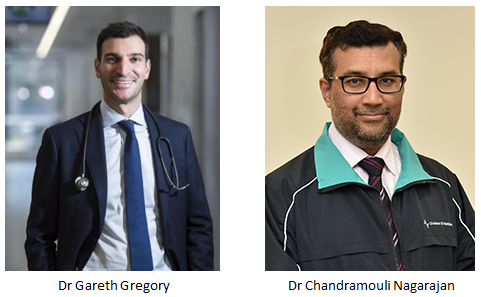
CRTH (Clinical Research Training in Hematology) is a 9-month long unique training and mentoring experience focused on clinical research in Europe, with a global scope. After participating in CRTH, you will have improved your skills and knowledge to benefit your work and career in clinical science.
The programme has welcomed early career researchers and clinicians from all over the world. YoungEHA’s Dr Elina Beleva had the opportunity to speak to two CRTH alumni and find out what they are up to now.
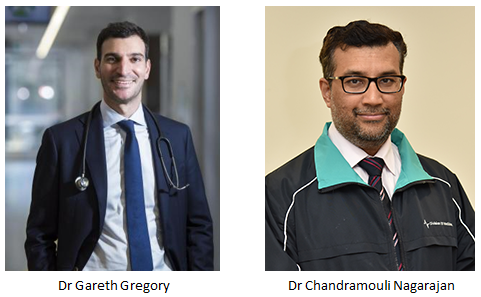
Dr Gareth Gregory (@DrGarethGregor1) is the Clinical Lead for the Hematology Clinical Research Unit and Aggressive Lymphoma at Monash Health and Monash University in Melbourne, Australia. He is a Victorian Cancer Agency Clinical Research Fellow, member of the Australasian Leukemia and Lymphoma Group lymphoma working party and steering committee member of the Australasian Lymphoma Alliance.
Dr Chandramouli Nagarajan is a Senior Consultant Hematologist and the Clinical Lead & Director of Myeloma and Plasma Cell Disorders at SingHealth Duke NUS Blood Cancer Center, Singapore General Hospital. He has a keen interest in increasing Asian patient participation in Clinical Trials and improving drug access for Lymphoma and Myeloma patients.
Both of you are CRTH alumni and your initial clinical trial idea has been brought to life with a protocol having recently been approved to start. Can you tell us more about your projects?
GG: Ours is a collaborative study being run within the Australasian Leukaemia and Lymphoma Group. We are focusing on improving outcomes for older patients with primary CNS lymphoma, as they are often ineligible for consolidative radiotherapy or stem cell transplantation strategies. We will be treating patients with MATRix or R-MPV/AraC induction and then consolidating with checkpoint inhibitor maintenance to see if we can prevent progression and improve their overall outcomes.
CN: This is a frontline multiple myeloma trial using a triplet combination of daratumumab, bortezomib and dexamethasone in an elderly-friendly weekly regimen with the aim of assessing the progression free survival. At the time of conception, frontline use of daratumumab had not been approved. Even today efficacy of this particular triplet is not known in the frontline setting and hence when complete will hopefully show us some valuable results and learning.
My other trial concept using similar a CD38 antibody combination with a triplet combo (quadruplet) for use in transplant-ineligible myeloma patients is also going through approvals presently.
Both these trials were designed with Asian patients, healthcare systems and access in mind in collaboration with the Asian Myeloma Network.
What was your trial idea like in the early stages? How far from realization was it before you entered the CRTH program?
GG: The trial was merely an idea that had undergone preliminary discussions with the funding body at the time of CRTH. It was very, very far from realization at the time of the workshops.
CN: The trials as they stand now were not even in a recognizable form at the time of the CRTH workshops. They were just mere concepts in my head and were very far away from becoming a reality at the time of the programme.
How did the specific structure of the program further shape the development of your project? What crucial alterations to the protocol were particularly attributable to the discussions with mentors during CRTH sessions? How did guidance change your approach towards overcoming imminent pitfalls and obstacles?
GG: The faculty were fantastic at taking the preliminary overview and connecting it to the tangible outcomes. This resulted in a significant rationalization of endpoints, and also an improved statistical design thanks to the input of Professor Robert Hills. I also found the peer discussion to be of great benefit, particularly as other alumni such as Elisabeth Schorb are making great gains in our treatment of PCNSL and her input was highly valuable!
CN: Discussions on the statistical design with Professor Robert Hills were an eye opener in statistical calculations for trials. All the faculty were fantastic – right from discussing the trial design, carefully deciding the primary end points, to discussing the quality of life aspects which was relevant for my study population. They helped with every aspect of the trials. Having senior investigators conducting myeloma trials as faculty was extremely helpful, as their subject matter and scientific expertise in myeloma as well as the wealth of knowledge in conducting myeloma trials helped to bring the project to fruition. Discussion with peers in the programme regarding how they went about constructing their trial was a great learning experience as well.
“CRTH has been transformative for me both personally and professionally.”
Tell us more about yourselves. What is your educational background, training and clinical trial experience? At what stage of your professional career were you at the time of application? Did your CRTH and mentoring experience change your professional career trajectory afterwards?
GG: Prior to CRTH I had completed Hematology Fellowship training and then a preclinical PhD assessing novel therapeutics for treatment of aggressive lymphomas. I was fortunate to be able to assist in one of those therapies to translate it into an early phase clinical trial. I was able to be involved in that process prior to CRTH and appreciate the innumerable hurdles along the way. Prior to CRTH, I had only been working in clinical trials for four years and predominantly as a sub-investigator. I was transitioning across to predominantly clinical and clinical-translational research activities. Based on my research activities since, and with a particular emphasis on my CRTH experience, I have now transitioned to being a Principal Investigator on two large collaborative group studies, a steering committee member of Australian lymphoma working parties, been awarded a Clinical Research Fellowship to protect time for research activities, and am now the Clinical Lead of our Hematology Clinical Research Unit. CRTH has been transformative for me both personally and professionally.
CN: Having completed hematology training in the UK, I had settled as a consultant hematologist at Singapore General Hospital. I had developed an interest in conducting clinical trials using novel agents in lymphoma and myeloma. Prior to joining CRTH, I had been a co-investigator for trials in this field and had an unsuccessful attempt at securing funding for my own trial idea. Since there is sub-optimal representation of (South-East) Asian patients in most of the international hematology trials and as access to novel agents can be a problem here, I was keen to participate in this endeavor and run trials in this part of the world. Since the CRTH programme, I have now matured into a Principal Investigator for two multi-national Asian myeloma trials and am currently the Director of Lymphoma and Myeloma Services at SingHealth-Duke NUS Blood Cancer Center, Singapore General Hospital. I hope to continue in this line and bring more scientifically sound novel agent based trials in lymphoma and myeloma to patients in Asia.
How did you hear about the program? Did you ever think “is CRTH for me”? What/who gave you confidence to apply for the program?
GG: I learnt of CRTH through the EHA e-mails, and a colleague from Melbourne who had previously participated in TRTH was glowing in his assessment. I didn’t think I would have comparable clinical trial experience to other applicants, but we were a truly diverse bunch in our cohort with a healthy mix of clinical and academic backgrounds across clinical, translational and preclinical research. I thought, ”why not throw my hat in the ring and see how the application goes?”
CN: I learnt about CRTH from a booth at an EHA meeting and started discussing it with the EHA office bearers and the CRTH alumni that I met. I honestly never thought that my experience would be considered for selection but the confidence given by the above people made me give it a shot.
“I have already been recommending CRTH to my junior colleagues and budding hematologists”
Would you recommend the CRTH program to fellow early career colleagues? What advice would you give to prospective applicants?
GG: I have been recommending CRTH to all of my current fellows and post-graduate students that are clinician-researchers. With regards to an application, I have recommended they work on one of the current investigator-initiated trials that our department is designing in the preliminary stage, and to use that as a basis for their project throughout. Some advice I recently received from a senior colleague when I was applying for a Clinical Research Fellowship:
“Be so glowing of yourself that you almost want to throw up on the keyboard, then go beyond that for the application”. I didn’t conform, but there is a trend for hematologists to undersell themselves and I would encourage any applicant to focus on their strengths, but be honest about what they perceive to be a weakness that CRTH could help to overcome!
CN: Absolutely! I have already been recommending CRTH to my junior colleagues and budding hematologists. Regarding advice – I would strongly recommend them to participate in a current trial project running in the department (and I open up opportunities to help them where possible) so that they can gain valuable experience in the conduct of clinical trials. The other aspect would be not to hesitate to showcase individual accomplishments.
In a nutshell, can you think of three words describing your CRTH experience?
GG: Transformation. Collaboration. Experience.
CN: Insightful. Networking-friendly. Exceptional.
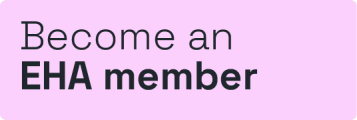
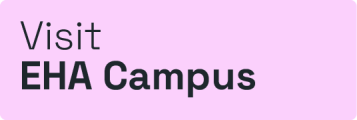
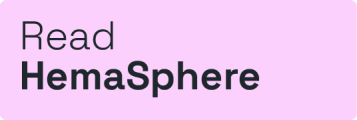
 Back
Back